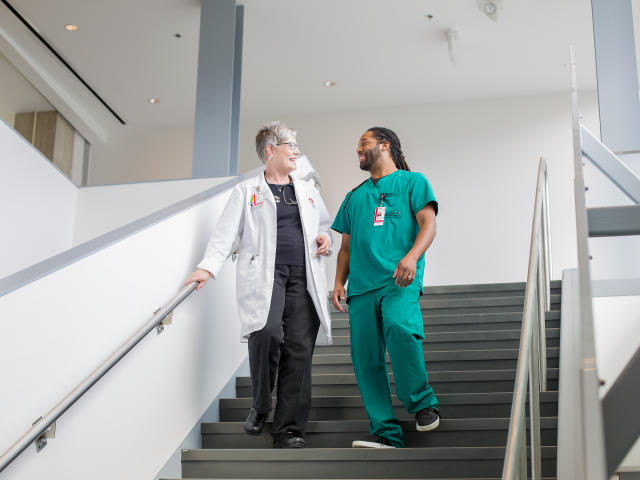Trends in Medical Alert Technology

The next decade promises to be an exciting one for medical alert technology, with advancements in innovation set to revolutionize how these systems are used to keep individuals safe. As the population ages, and the demand for health monitoring solutions continues to rise, medical alert systems are becoming more than just simple devices. They are evolving into smart, integrated solutions that offer continuous, real-time monitoring, personalized care, and greater independence for seniors and individuals with health conditions. Let’s take a look at some of the key trends expected to shape the future of medical alert technology over the next decade.
1. Smart Wearables and IoT Integration
Smart wearables have already become popular in various sectors, and their application in healthcare is expected to grow significantly. In the medical alert space, wearables such as smartwatches, health-tracking bands, and even clothing with embedded sensors will continue to play a significant role in monitoring health.
By integrating with the Internet of Things (IoT), these devices will have the ability to transmit real-time data to healthcare providers, caregivers, or family members. For instance, a wearable could track vital signs such as heart rate, blood pressure, and oxygen levels, alerting medical personnel if any abnormalities are detected. In the next decade, IoT integration will likely enable seamless communication between medical alert devices and other connected systems, such as home security devices or home automation systems, enhancing safety in everyday life.
2. AI-Powered Monitoring and Predictive Analytics
Artificial intelligence (AI) is transforming the healthcare industry, and it will continue to revolutionize medical alert systems. In the future, AI will be used to analyze data from wearables, sensors, and other devices to identify potential risks and health issues before they become serious.
Predictive analytics will play a key role in foreseeing health emergencies. For example, by tracking a person’s medical history, lifestyle habits, and real-time biometric data, AI could potentially predict when someone might experience a fall, a heart attack, or other health event. The system could then automatically alert emergency services or caregivers, enabling a swift response.
These AI-driven systems will not only respond to emergencies but also improve preventive care by monitoring changes in health metrics and providing early intervention suggestions. This could potentially lead to more personalized healthcare plans, reducing hospital visits and preventing long-term complications.
3. Improved Fall Detection Technology
Falls are one of the leading causes of injury among seniors, and the need for effective fall detection systems has never been greater. Over the next decade, fall detection technology is expected to undergo substantial improvements, becoming more accurate and less intrusive.
Currently, many medical alert devices feature simple fall detection systems, using accelerometers and gyroscopes to sense falls. However, these systems often produce false alarms or miss subtle falls. Advancements in machine learning and data analysis will make it possible for medical alert devices to better understand the context of a fall and reduce false alarms.
Additionally, future fall detection systems will be integrated with other monitoring technologies such as smart homes, so if a fall is detected, the system could alert caregivers or even dispatch emergency personnel to the exact location within seconds. Some wearable medical alert devices may even be able to detect patterns leading to falls, allowing for preventative measures to be put in place.
4. Voice-Activated Assistance and AI Chatbots
Voice-activated technology is already common in everyday life, from virtual assistants like Alexa and Siri to voice-controlled smart home devices. In the coming years, voice technology will be further integrated into medical alert systems, providing a more accessible and user-friendly experience for individuals with limited mobility or vision impairment.
Through voice-activated systems, users will be able to easily contact emergency services, caregivers, or loved ones without having to press buttons or navigate complex interfaces. The use of AI chatbots will also allow users to interact with their devices in real-time, asking questions about their health status, medication reminders, or even receiving emotional support.
For example, imagine a senior at home with a medical alert system that can listen for signs of distress, such as breathing problems or voice patterns indicating confusion or discomfort. The system could then automatically respond, offering assistance or directing the user to take certain actions.
5. Telemedicine Integration
Telemedicine, which allows patients to consult with healthcare providers remotely, has grown in popularity, especially following the COVID-19 pandemic. Over the next decade, we can expect further integration of medical alert systems with telemedicine platforms. This integration will allow healthcare professionals to remotely monitor patients’ conditions, provide consultations, and intervene quickly in case of an emergency.
For instance, a medical alert system may be connected to a telemedicine platform where a healthcare professional can monitor a patient’s vital signs in real time. If the system detects a concerning issue, such as a spike in heart rate or a drop in blood oxygen levels, the healthcare provider can immediately initiate a virtual consultation or, if necessary, arrange for emergency care.
This type of integration will not only improve the response time during emergencies but also reduce the need for in-person visits, enabling more convenient and accessible healthcare services.
6. Data Security and Privacy Concerns
As medical alert systems continue to evolve, so will the data they collect. With IoT integration, AI-driven insights, and cloud-based platforms becoming more prevalent, ensuring the security and privacy of users’ personal health data will be a top priority.
In the next decade, expect to see advanced encryption methods and other cybersecurity measures designed to protect users’ data from breaches. Governments and regulatory bodies are likely to implement stricter data protection laws for healthcare technologies, ensuring that medical alert systems comply with privacy standards such as HIPAA in the U.S.
Consumers will also demand more transparency regarding how their data is used and who has access to it. As a result, companies in the medical alert industry will need to prioritize transparency, control, and security to maintain consumer trust.
7. Subscription-Based Services with Enhanced Features
As the market for medical alert devices grows, companies will increasingly offer subscription-based services, providing users with a range of premium features. These features could include real-time health analytics, direct access to telemedicine services, personalized care plans, and integration with smart home devices.
Subscription models will also provide users with the flexibility to upgrade their devices and software without having to invest in entirely new systems. As the technology improves, the devices themselves may become more affordable, and users will be able to access state-of-the-art features for a monthly fee.

8. Personalized Health Solutions
In the coming decade, medical alert systems will become more personalized and adaptable to each user’s unique health needs. Customization options will allow individuals to tailor their devices to track specific health conditions, such as diabetes, heart disease, or respiratory issues. Users will be able to explore different solutions that are better suited for their medical profiles, ensuring more effective monitoring and a higher level of personalized care.
For example, an individual with diabetes could use a medical alert device that tracks glucose levels, offering real-time monitoring and alerts when their levels are outside of safe ranges. Similarly, someone with a history of stroke or heart disease might opt for a system that closely monitors their heart rate, blood pressure, and activity levels.
These systems will not only monitor vital signs but also provide proactive care through data insights, helping individuals make better lifestyle choices and maintain optimal health.
9. Improved Battery Life and Sustainability
Long-lasting battery life is essential for medical alert devices, and future advancements in energy efficiency will likely result in devices that require less frequent charging. Furthermore, as sustainability becomes an increasing priority for consumers, manufacturers will focus on creating devices that are more eco-friendly.
Next-gen batteries may use alternative energy sources or advanced charging technologies that reduce waste and improve the longevity of devices. This will be especially important for wearables and other portable medical alert devices that need to stay powered over long periods.
10. Seamless Integration with Healthcare Ecosystems
In the future, medical alert systems will integrate more seamlessly with a person’s overall healthcare ecosystem. This could involve connecting medical alert devices with hospital systems, electronic health records, and even pharmacies to create a holistic view of a person’s health.
Such integration will allow doctors, caregivers, and family members to access real-time health data, track progress, and make informed decisions. These integrated systems could also facilitate collaboration between multiple healthcare providers, ensuring coordinated care and reducing the chances of medical errors.
Conclusion
The next decade will bring groundbreaking advancements in medical alert technology, enabling safer, more efficient, and personalized care for individuals in need. From smart wearables and AI-powered systems to seamless telemedicine integration and improved fall detection, these innovations will empower users to maintain their independence while providing peace of mind to caregivers and family members. As these technologies continue to evolve, the future of medical alert systems will be marked by greater accuracy, convenience, and overall quality of life for individuals managing health conditions or aging in place.



